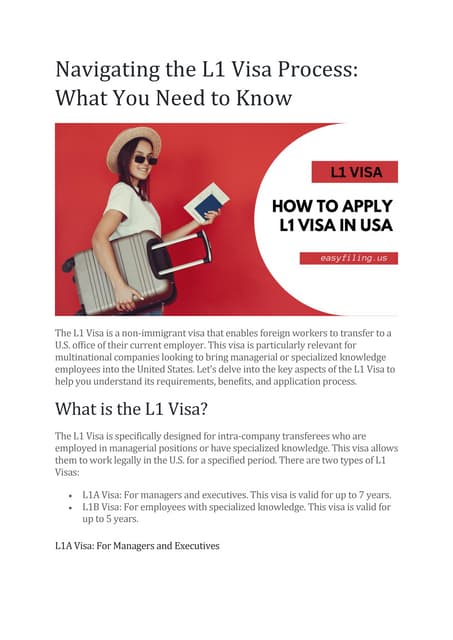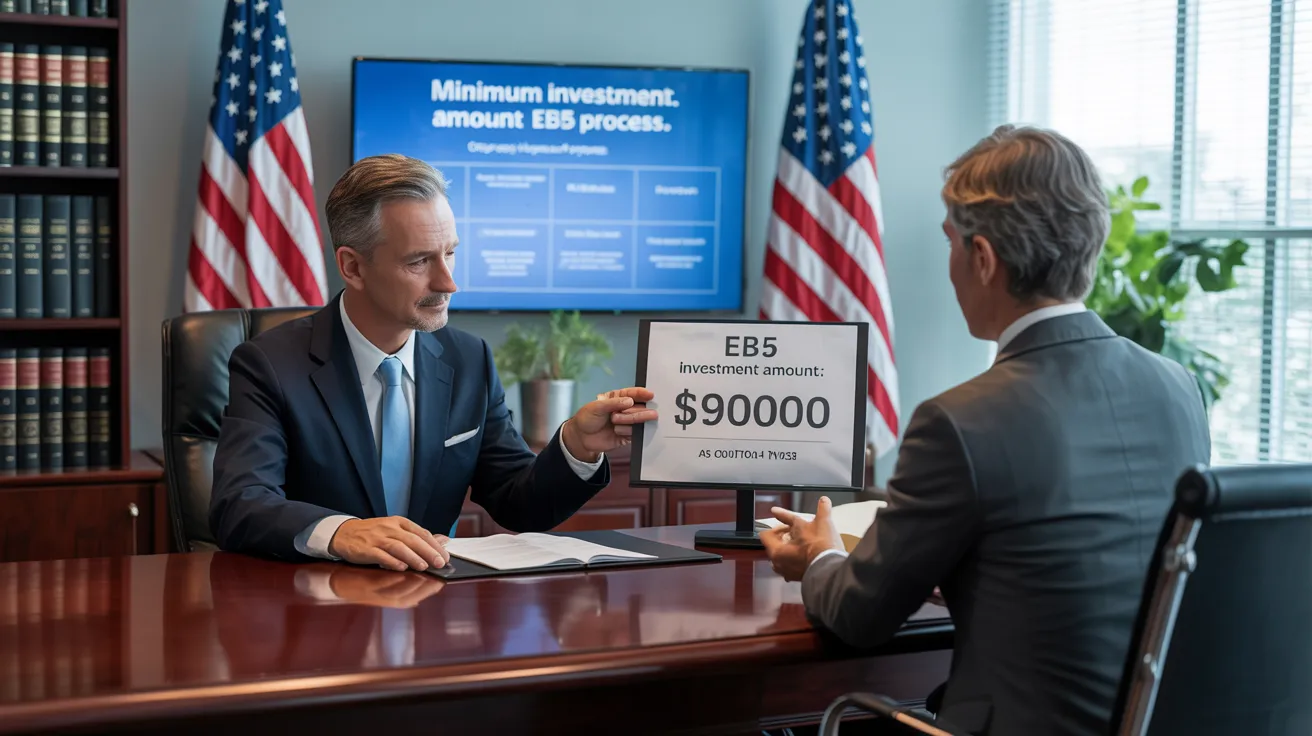Some Ideas on L1 Visa You Need To Know
Table of ContentsExamine This Report about L1 VisaL1 Visa Things To Know Before You Get ThisThe 10-Second Trick For L1 Visa5 Easy Facts About L1 Visa ShownThe smart Trick of L1 Visa That Nobody is Talking AboutThe 10-Second Trick For L1 Visa
Available from ProQuest Dissertations & Theses Worldwide; Social Science Premium Collection. DHS Workplace of the Assessor General. Gotten 2023-03-26.
U.S. Division of State. Recovered 22 August 2016. "Workers paid $1.21 an hour to mount Fremont tech firm's computers". The Mercury Information. 2014-10-22. Retrieved 2023-02-08. Costa, Daniel (November 11, 2014). "Little-known momentary visas for international tech workers depress salaries". Capital. Tamen, Joan Fleischer (August 10, 2013). "Visa Owners Change Workers".
Fascination About L1 Visa
In order to be eligible for the L-1 visa, the foreign company abroad where the Beneficiary was employed and the United state firm should have a qualifying relationship at the time of the transfer. The different kinds of certifying connections are: 1.
Example 1: Company A is integrated in France and uses the Beneficiary. Company B is integrated in the U.S. and intends to seek the Beneficiary. Business A has 100% of the shares of Firm B.Company A is the Moms And Dad and Company B is a subsidiary. Consequently there is a qualifying connection in between the two companies and Firm B must have the ability to sponsor the Recipient.
Example 2: Firm A is incorporated in the united state and intends to seek the Recipient. Company B is integrated in Indonesia and uses the Beneficiary. Firm A has 40% of Company B. The staying 60% is had and managed by Company C, which has no connection to Company A.Since Company A and B do not have a parent-subsidiary partnership, Company A can not sponsor the Recipient for L-1.
Example 3: Firm A is integrated in the united state and wishes to seek the Beneficiary. Company B is incorporated in Indonesia and utilizes the Beneficiary. Firm A has 40% of Firm B. The remaining 60% is owned by Firm C, which has no relation to Company A. Nevertheless, Firm A, by formal arrangement, controls and full manages Firm B.Since Business A has much less than 50% of Business B but takes care of and regulates the business, there is a qualifying parent-subsidiary relationship and Company A can fund the Beneficiary for L-1.
The Ultimate Guide To L1 Visa
Company B is included in the U.S.
L1 Visa Things To Know Before You Get This

The L-1 visa is an employment-based visa category established by Congress in 1970, permitting multinational firms to move their managers, execs, or click here crucial personnel to their United state procedures. It is generally referred to as the intracompany transferee visa.

In addition, the beneficiary must have operated in a managerial, exec, or specialized employee position for one year within the three years coming before the L-1A application in the foreign company. For brand-new workplace applications, international work has to have remained in a managerial or executive ability if the beneficiary is concerning the United States to function as a supervisor or executive.
Some Known Factual Statements About L1 Visa

If provided for an U.S. firm operational for even more than one year, the preliminary L-1B visa is for as much as three years and can be expanded for an additional 2 years (L1 Visa). Alternatively, if the U.S. business is recently established or has been operational for much less than one year, the L1 Visa guide initial L-1B visa is released for one year, with extensions offered in two-year increments
The L-1 visa is an employment-based visa group established by Congress in 1970, permitting international business to transfer their managers, executives, or key workers to their united state operations. It is frequently described as the intracompany transferee visa. There are two main kinds of L-1 visas: L-1A and L-1B. These types are appropriate for workers employed in various positions within a company.
Facts About L1 Visa Revealed
In addition, the recipient must have operated in a managerial, executive, or specialized employee setting for L1 Visa requirements one year within the three years preceding the L-1A application in the international business. For new workplace applications, international employment must have remained in a supervisory or executive ability if the beneficiary is coming to the USA to work as a supervisor or exec.
for up to seven years to supervise the procedures of the united state affiliate as an executive or manager. If issued for an U.S. company that has actually been operational for even more than one year, the L-1A visa is originally provided for approximately 3 years and can be prolonged in two-year increments.
If provided for an U.S. company operational for more than one year, the first L-1B visa is for as much as three years and can be extended for an added 2 years. Conversely, if the U.S. company is newly established or has been operational for much less than one year, the first L-1B visa is issued for one year, with extensions available in two-year increments.